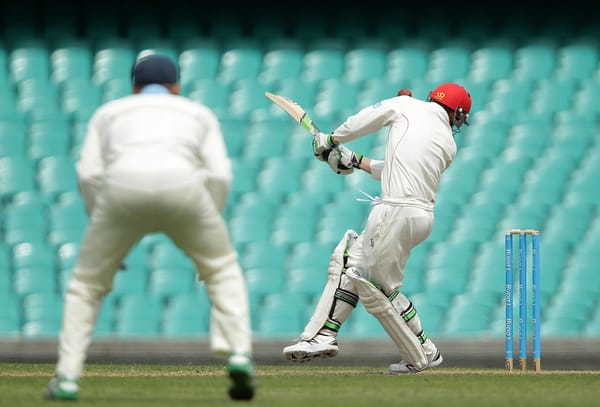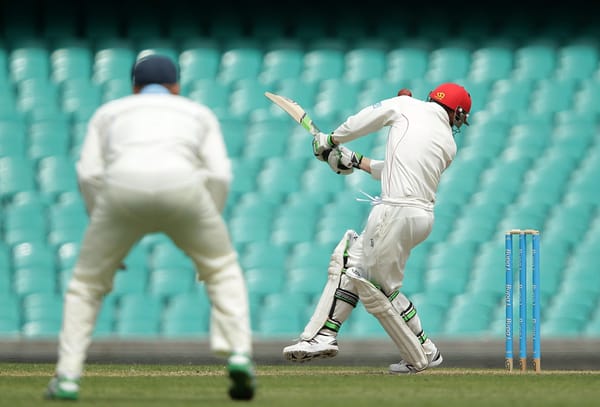Autumn Internationals: How far off are England from lifting the World Cup?
After mixed performances in the Autumn internationals, Henry Lambley examines whether winning the world cup next year is a realistic dream

England ended their autumn international campaign with a 26-17 win against an Australian team struggling for form in recent weeks. An estimated 82,000 supporters at Twickenham watched England exert their dominance in the scrum leading to a brace of tries split either side of half time for number eight Ben Morgan. Australia did sparkle at times and retaliated with two tries of their own through Fly Half Bernard Foley, who was substituted immediately after, and replacement lock Will Skelton, although they conceded far more penalties during the 80 minutes.
After exchanging penalties at the beginning, England pushed ahead with another three points from the tee as well as Morgan’s first converted try – the result of an Australian handling error deep in their own 22. Another Foley penalty meant that at the break the visitors trailed 13-6. Australia emerged the brighter at the beginning of the second half and made light work of the home defence to score an emphatic try 5 minutes in. Having closed to within three points, the game intensified although it was more errors in deep in their own territory that cost the Wallabies a second try at the hands of Morgan. They pushed hard for another try which duly came but were held off with two more penalties from the boot of George Ford.
England can take plenty of positives away from the match with good performances put in across the pitch. The forwards controlled the game at set pieces and breakdowns as well as utilising the rolling maul with devastating effect. George Ford’s open play kicking was much improved. Having lacked purpose in previous matches, all of his kicks put pressure on the Australian defence and were the initiating step of both tries. The stand-out performers were Morgan for his two tries and control of the scrum and Courtney Lawes, who produced try-saving tackles in both halves before going off injured.
There is cause for concern as well. Whilst Australia would always prove a greater challenge than last week’s opponents, Samoa, the team they fielded looked wearied by a series of defeats and were certainly not on a par with the other big southern hemisphere teams. The English defence was unable to cope with the speed and strength of the Australian backs and would have conceded more tries were it not for several handling errors at crucial moments. In contrast, England’s back three played with little variety and were completely neutralised in attack and provided little to no resistance when defending. Jonny May, who scored three tries this series, was reduced to a cameo appearance with a single carry in the first half while other winger Anthony Watson made only a few short bursts in the second half.
What have we learnt from the series as a whole? The England pack is not only effective but consistently so. They dissected Samoa and Australia with ease and formed the basis of most of the teams attacks. With the likes of Alex Corbisiero and Dan Cole returning from injury they will only be stronger. George Ford is an emerging talent. This time last year Owen Farrell was making his mark at 10 but has since fallen out of favour and with good reason. Ford has grown with confidence over the Autumn and played well against the Wallabies although his place kicking will need to improve to make him top choice for the Six Nations in February.
The backs need to improve their attacking game which lacked sufficient variation to fool the better teams. Jonny May shone with an individual try against the All Blacks and added another two against Samoa but was made to look as ordinary as the rest of them in the other tests. Mike Brown was especially disappointing given his performance in recent tournaments. The whole team lacks the intensity over 80 minutes to secure the win. It was a series long theme that showed that, whether it was the second half against New Zealand, the first half against South Africa or after scoring tries against Australia, they cannot afford to rest on their laurels against the best teams in the world because they will be punished.
Looking ahead to the World Cup next September, England’s prospects look fairly good. While they only won two games in the Autumn series it was not a complete disaster and the issues highlighted can be ironed out through the Six Nations and over the summer when the coaches will have more time to work with the players. It is not fanciful to believe that they could win the competition and should certainly progress from their group judging by the current form of Australia. Players returning from injury will undoubtedly inject some energy into the team as the competition for places intensifies and the potential of Sam Burgess’ move from League to Union could give the backs that dynamism they have been sorely lacking.
The series was an opportunity for Stuart Lancaster to bed in a relatively inexperienced team with a view to the World Cup and we will have to wait until then to find out if this tactic has been successful.
England have undoubtedly stalled since the Six Nations in the spring but there is a clear path ahead to prosperity if the coaching staff are prepared to acknowledge the shortfalls of this current crop of players.
Lifting the Webb Ellis Cup in ten months’ time may seem more a hope than a likely outcome with the form of the favourites New Zealand but with home advantage, all is still to play for.








